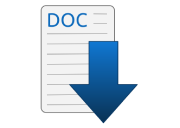Student Debt Hardship Letter Templates
Student Debt Hardship Letters
Table of Contents
- Introduction
- Understanding a Student Debt Hardship Letter
- Who Should Write a Student Debt Hardship Letter
- Essential Components of a Student Debt Hardship Letter
- Our Student Debt Hardship Letter Templates
- Unemployment Hardship Letter
- Medical Hardship Letter
- Unexpected Expenses Hardship Letter
- Change in Family Circumstances Hardship Letter
- Wrapping up
Introduction
Navigating through student debt can be challenging. There are times when personal circumstances, such as job loss, medical emergencies, or unexpected financial difficulties, can make it increasingly hard to keep up with the repayments. If you find yourself in such a situation, a Student Debt Hardship Letter could be a lifeline. But what exactly is a Student Debt Hardship Letter?
A Student Debt Hardship Letter is a formal document you write to your loan servicer, explaining your current financial hardship and requesting a temporary or permanent adjustment to your loan repayment terms. This could be a deferral, forbearance, loan modification, or even loan forgiveness in certain situations.
In this guide, we’ll delve into the purpose and significance of a Student Debt Hardship Letter, discuss who should write one, and highlight what it should contain. Furthermore, we offer a variety of downloadable Student Debt Hardship Letter templates and samples, designed to guide you through the process of articulating your financial hardship effectively.
Understanding the concept of a hardship letter, knowing when to write one, and mastering the art of conveying your circumstances concisely and clearly can make a significant difference in managing your student debt. So, whether you’re struggling with student loan payments or know someone who is, this guide is a valuable resource. Let’s navigate these tricky waters together.
Understanding a Student Debt Hardship Letter
Student debt is a reality for many Americans. When life throws unexpected financial challenges your way, keeping up with loan repayments can become a heavy burden. This is where a Student Debt Hardship Letter comes into play.
A Student Debt Hardship Letter is a personal, written appeal to your loan servicer, the company that handles the billing and other services for your student loan. Its primary purpose is to communicate your inability to fulfill your current loan repayment obligations due to specific hardships you are facing.
These hardships could include unemployment, substantial decrease in income, a sudden illness, or unexpected expenses. The aim is to provide your loan servicer with a detailed account of your situation, giving them an understanding of why you’re struggling with your repayments.
The significance of this letter lies in its potential to lead to different types of relief. Depending on your circumstances, your loan servicer may be able to offer options like deferment (postponing your repayments), forbearance (temporarily reducing your repayment amount), a change in the repayment plan, or even loan discharge in extreme cases.
It’s important to note that writing a Student Debt Hardship Letter does not guarantee any form of relief. The decision ultimately lies with your loan servicer, who will evaluate your situation based on the information provided in your letter and in accordance with their own policies and federal regulations.
However, when written effectively, a hardship letter can be a critical step in managing your student debt. It opens a line of communication between you and your loan servicer, expressing your commitment to repay your debt while acknowledging the difficult circumstances you are currently facing.
So, if you’re grappling with repayments and feeling overwhelmed, writing a Student Debt Hardship Letter may well be your next step. Keep reading to discover who should consider writing one and what it should contain.
Who Should Write a Student Debt Hardship Letter
A Student Debt Hardship Letter isn’t just for anyone with a student loan. It’s a specific tool designed for individuals who are undergoing financial hardship that significantly hinders their ability to continue making regular student loan payments. If you’re dealing with financial circumstances that have drastically altered your income or expenses, a hardship letter may be suitable for you. Here are a few situations that might warrant writing one:
- Unemployment or Reduced Income: If you’ve recently lost your job or experienced a considerable decrease in your income, keeping up with student loan repayments might become challenging.
- Medical Issues: Significant health problems, either for you or a family member, can lead to increased medical expenses and possible loss of income, affecting your ability to make repayments.
- Unexpected Expenses: Sometimes, life throws a curveball your way, such as urgent home repairs, sudden relocation, or a car breakdown. Unforeseen, significant expenses like these can strain your budget, making it difficult to keep up with loan repayments.
- Change in Family Circumstances: Events such as a divorce or the birth of a child can alter your financial dynamics, potentially making loan repayments unmanageable.
It’s important to remember that the scenarios mentioned above are just examples. Financial hardship can arise from a myriad of situations, and each person’s circumstances are unique. If you find yourself in a situation where repaying your student loan becomes a severe financial strain, consider writing a Student Debt Hardship Letter.
Remember, the goal of this letter isn’t to escape from your obligations but to communicate your current financial reality to your loan servicer. It’s about seeking temporary relief or a manageable adjustment that allows you to continue making payments according to your current capacity. So, if you resonate with any of these scenarios, continue reading to learn what a Student Debt Hardship Letter should contain.
Essential Components of a Student Debt Hardship Letter
When you’re drafting a Student Debt Hardship Letter, your goal is to effectively communicate your situation and request for help. To achieve this, your letter should be precise, clear, and respectful. Let’s look deeper into the key components that every effective hardship letter should include:
- Identification Details: At the beginning of your letter, include essential details such as your name, contact information, and your loan account number. This information helps the loan servicer identify your account quickly.
- The Statement of Hardship: This is the heart of your letter. Clearly and concisely explain your current financial situation, making sure to detail the specific hardships you’re experiencing. Be honest about your circumstances, whether it’s unemployment, medical issues, unexpected expenses, or other scenarios.
- Financial Information: Provide a brief overview of your financial status. This could include your income, expenses, and any other outstanding debts. If you have supporting documents like bank statements, pay stubs, or medical bills, consider attaching copies with your letter.
- Request for Assistance: After explaining your situation, state your request. Are you asking for a loan modification, deferment, forbearance, or another form of relief? Be explicit about what you’re hoping to achieve. Remember, your servicer is there to help you find a feasible solution, not to judge your situation.
- Expression of Intent: Assure your loan servicer that your intention is to continue paying off your debt, but your current situation is making it difficult. This can emphasize your commitment and willingness to find a solution.
- Supporting Evidence: If possible, include any evidence that supports your claim of hardship. This could include medical bills, a termination letter from an employer, a statement from your landlord about unpaid rent, etc.
- Closure: Conclude your letter respectfully, express your hope for a favorable response, and thank your loan servicer for their understanding and help.
Remember, your Student Debt Hardship Letter is a personal plea, not a standard form. It should reflect your unique situation and be written in a tone that expresses your current hardship sincerely and respectfully. However, while it’s important to be thorough, avoid making your letter too long. Aim to express everything you need to in a clear and concise manner.
Now that you know what an effective Student Debt Hardship Letter should contain, it’s time to take a look at different types of letters and the scenarios they address.
Our Student Debt Hardship Letter Templates
Just as every individual’s financial situation is unique, so too are the circumstances that necessitate a Student Debt Hardship Letter. Various situations may call for a slightly different approach or emphasis in your letter. Understanding these different types of hardship letters can help you tailor your letter more effectively to your specific situation.
Now, to help you get started with writing your letter, let’s move on to our collection of downloadable Student Debt Hardship Letter templates. These can guide you in structuring your letter and ensuring you cover all the necessary points. Remember to replace the text in square brackets with your details or to delete it if it does not apply to your situation.
Bare in mind that the type of Student Debt Hardship Letter you write will depend on your unique circumstances. The key is to ensure that your letter accurately and effectively communicates your specific hardship situation. By doing so, you stand a better chance of getting the relief you need.
Unemployment Hardship Letter
If you’ve recently lost your job and are unable to meet your student loan obligations, this type of letter is for you. It should detail the circumstances of your job loss, any severance package (or lack thereof), your efforts to secure new employment, and how this change has affected your ability to repay your loan.
Medical Hardship Letter
This letter is suitable for those facing significant health problems, either for themselves or a family member, leading to increased medical costs or a decrease in income. The letter should discuss the nature of the medical issues, provide an overview of the related expenses, and explain how this has influenced your financial situation.
Unexpected Expenses Hardship Letter
Unforeseen circumstances, such as urgent home repairs, a sudden need to relocate, or a car breakdown, can severely strain your budget. In this letter, you would explain the unexpected expenses you’re dealing with and how they have hindered your ability to keep up with your student loan repayments.
Change in Family Circumstances Hardship Letter
Events like a divorce or the birth of a child can lead to substantial financial shifts. This letter would explain the change, provide details about the new financial responsibilities, and detail how this has affected your ability to make student loan payments.
Wrapping up
Addressing student debt is a significant concern for many Americans, and the process can often seem overwhelming. However, the tools and options available to borrowers, such as the Student Debt Hardship Letter, can make navigating these financial challenges more manageable.
Remember, a well-written hardship letter serves as a vital bridge between you and your loan servicer, opening a line of communication and paving the way to potential relief options. While it might seem daunting to pen such a personal and crucial document, the key is to clearly express your current financial situation and illustrate the specific hardship you’re facing.
We hope this guide has shed light on what a Student Debt Hardship Letter is, who should write one, and what it should contain. Equipped with this knowledge, you are now ready to tackle your student debt scenario head-on.
Whether you’re dealing with unemployment, medical issues, unexpected expenses, or a change in family circumstances, remember that you’re not alone. Many people are going through similar situations and have managed to find relief through open, honest communication with their loan servicers.
So, utilize our templates, take a deep breath, and remember: writing a Student Debt Hardship Letter is a step forward, a move towards regaining control over your financial future. And that’s a step worth taking.

